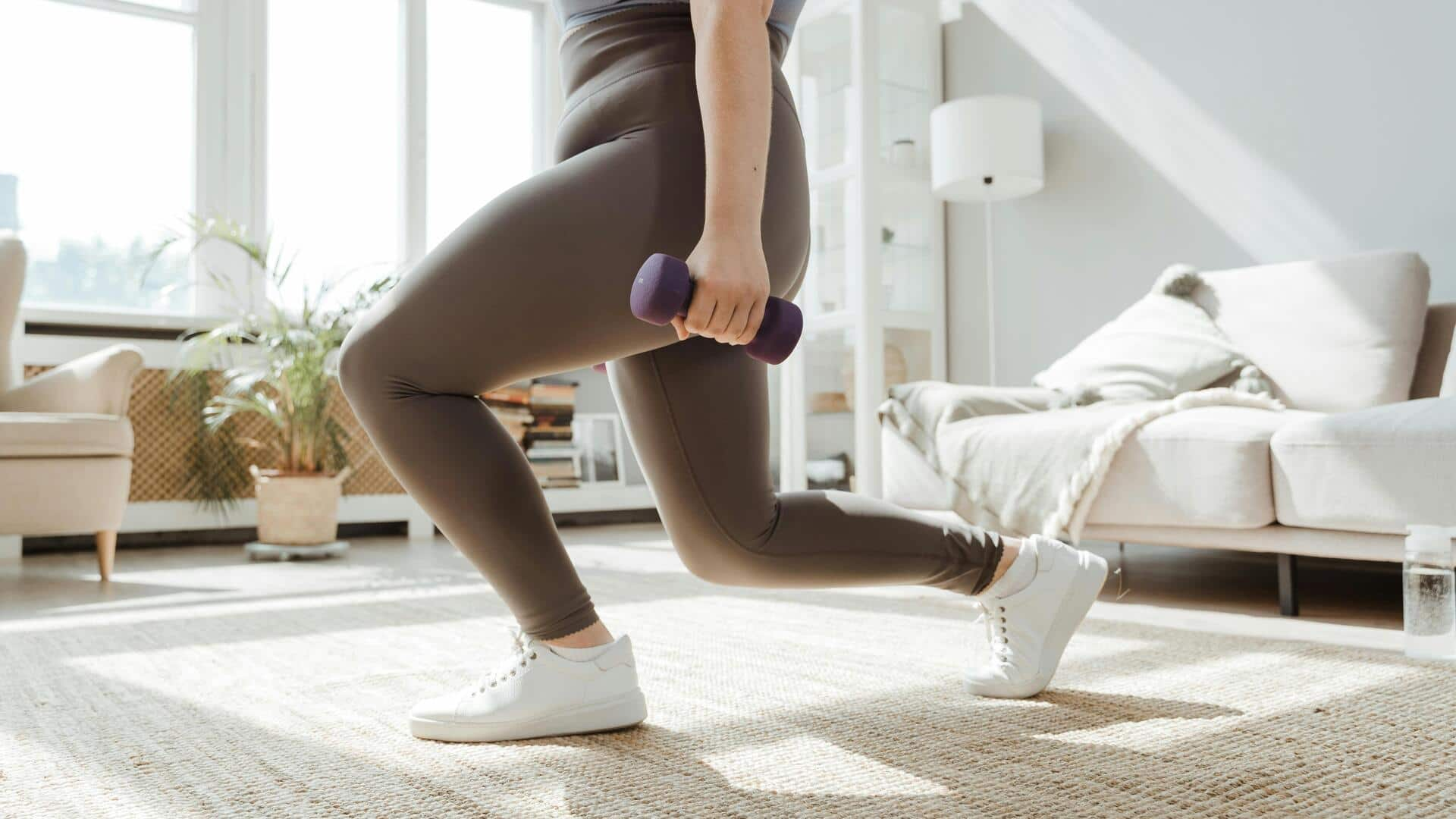
Level up your workout with cross-step lunges
What's the story
Cross-step lunges are a great exercise to improve your balance and coordination. By adding a cross-step movement to traditional lunges, you can target multiple muscle groups and improve your stability. This exercise is great for people looking to improve their functional fitness, be they are athletes or fitness enthusiasts. By regularly incorporating cross-step lunges into your routine, you can improve your balance, strength, and overall agility.
#1
Understanding cross-step lunges
Cross-step lunges involve stepping diagonally across the body while lowering into a lunge position. This variation challenges the muscles differently from standard lunges by engaging the inner thighs and glutes more effectively. The movement requires greater focus and control, which helps enhance proprioception, the body's ability to sense its position in space. Practicing this exercise regularly can lead to improved coordination and body awareness.
#2
Benefits of cross-step lunges
Incorporating cross-step lunges into your workout regimen can do wonders for your balance and coordination. The exercise works on various muscle groups, including quadriceps, hamstrings, calves, and glutes. It also improves core stability as you need to engage your core muscles to maintain balance throughout the movement. This makes it an ideal choice for anyone looking to improve their functional fitness.
#3
Proper technique for maximum effectiveness
To perform cross-step lunges correctly, start by standing with feet hip-width apart. Step diagonally forward with one foot while lowering into a lunge position, ensuring that both knees are at right angles. Keep your back straight and engage your core throughout the movement. Alternate legs after each repetition to ensure balanced muscle development on both sides of the body.
#4
Incorporating cross-step lunges into your routine
Start with two sets of 10 repetitions per leg if you're a beginner. Gradually increase as you get comfortable with the movement's complexity. You can also add weights or resistance bands as you get stronger. This will enhance the challenge without compromising form or safety during execution.